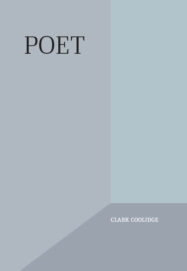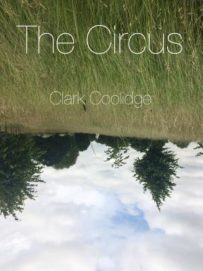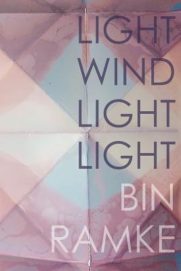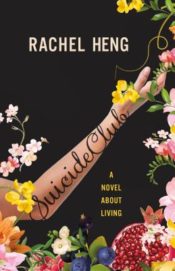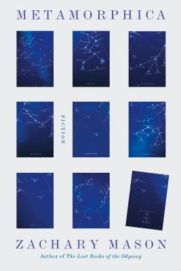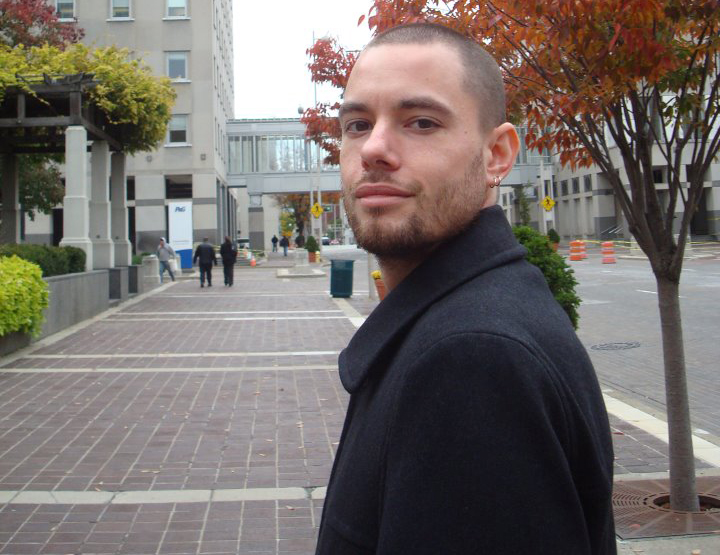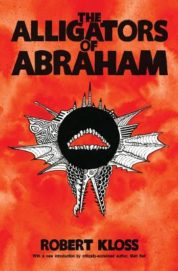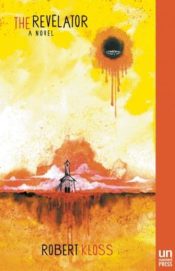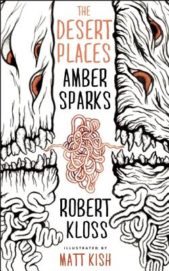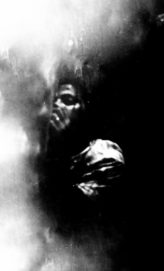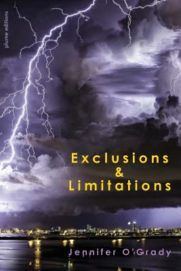
Photo by Christopher Ludgate
by bart plantenga
While much poetry is soft drink, and some of it wine, very little of it qualifies as cognac. Karen Garthe’s poetry is that ruminating bouquet, a cognitive dissonance of richness in the realm of austerity. Neither minimal nor concrete begin to describe it. Beguiling and with ligaments concealed, the words provoke:
The Striptease of poverty sly peels
her
jacket a side to show HER GUN WINs
sashays all the choke
debt
Leaping broad, Nordic chasms, her gift is alchemical, transforming a frugal sparseness into a feast of speculative white space, necessary erasures and pregnant silences between words requiring those leaps of faith that one experiences in the silence between the notes of Miles Davis or Erik Satie.
Garthe’s latest book is The hauntRoad (Spuyten Duyvil, $15). Her other books include The Banjo Clock (University of California Press, 2012) and Frayed escort (Center for Literary Publishing, 2006), winner of the Colorado Prize for Poetry. Her poetry, essays, and reviews have appeared in Chicago Review, New American Writing, Caliban, Denver Quarterly, Lana Turner, and more.
Although Garthe has devoted much of her meditative solitude to poetry, she has also lived a rambunctious Greenwich Village life. Escaping to New York from a beautiful but constrained Baltimore in the late ’60s to study ballet, she cavorted with the outrageous, the inspired, the sloppy, and the illuminated; a friend to many in the Village folk, jazz, rock, and art scenes, she was baptized in glorious decadence. We start there:
Karen Garthe: I worked in the music business for a number of years managing clubs—the upstairs at Max’s Kansas City, the Other End during Dylan’s Rolling Thunder Review—and Patti Smith, who I’d met when we were both book clerks at Scribner’s. And, no, life in Baltimore wasn’t minimal or ascetic . . . Jeez!
bart plantenga: That’s not what I meant. It was about withdrawing from a life of fake frivolity of annoying decorum to the respite-sanctuary of your bedroom—DO NOT ENTER sign on the door—where you can read your defiant books: Dorothy Parker, Thomas Wolfe, Carson McCullers . . .
KG: My parents went to cocktail parties every weekend, or gave a party, or went to dinner dances. They were socialites. They got their names in the Blue Book—even my name was in there for a while. My parents went to so many Christmas parties that my mother had a chart of the outfits she wore where and when, so as not to duplicate the same outfit with the same people. In retrospect, I did have a privileged life, but the Baltimore world was a place that from a very young age I couldn’t wait to get out of. I left when I was 18, right out of high school. I came to New York to study ballet. It was a scandal.
BP: Your own “Piss Factory” [Patti Smith]: “I’m gonna get out of here, I’m gonna get on that train, / I’m gonna go on that train and go to New York City / I’m gonna be somebody . . .”
KG: Yes, but unlike Patti, for me it had not much to do with wanting to “be somebody” in the sense of being famous. I just wanted to live in a world that made sense to me, that would accept me. It’s a very long, complicated and sad story and in many respects, probably not that unusual for a middle-class kid in the suburbs, but Life in Baltimore was hell for me. I was a terribly unhappy person who lived in her room and didn’t come out unless she had to. And I have thought a thousand times about how much my current life—solitude after numerous failed marriages . . .
BP: Or successful divorces!
KG: . . . mirrors how I lived as a child—the end just like the beginning. This past year I was alone so intensely and relentlessly, recovering from chemo treatments for breast cancer. I couldn’t much write or create anything, but I did study, read, listen, watch, think. If it weren’t for feeling so sick most of the time, it was as though I had a residence in a palace or an art colony, I indulged myself so completely.
I can hardly qualify all the things I’ve done here in New York for more than 50 years. When I arrived, New York was a wildly creative artistic place and I’m grateful for that, just like I’m glad I grew up at a time when you could walk out the door in the morning and come back at dinnertime unbeeped, uncalled, unsummoned, unsurveilled, and unobserved.
I had all kinds of jobs working with all kinds of people. I was plenty miserable at them much of the time—and would feel especially sorry for myself when I’d see my musician friends waltzing back from a baseball game when I was coming home from work. Though I worked in the music business for a number of years managing clubs, I did not at all get to live as an artist in the freewheeling way of many friends. I couldn’t live off gigs or the sale of paintings. I had no endowment either, and I had to have a job to pay the rent. But there was a wonderful upside to this—my world was expansive, inclusive. I got to know people from completely different backgrounds than my own, with different goals and purposes, different enjoyments and pleasures in their lives than those of the comparatively cloistered downtown artist keeping company with those in agreement, keeping “to type.”
By comparison, my life was fantastically more diverse and experimental. It was adventurous and I was able to participate in and observe things as various as the mechanism of a waste disposal plant, a smoky room full of blustery Tammany Hall-type commissioners, an iconic diva (a real one, not a brand) in tears in situ, the vulnerability and tenderness of an otherwise brutal master of the universe—able, too, to listen closely to the mother of a homeless family about how many different shelters they’d called home, how they struggled for food. I worked with the powerful, the so-called glamorous, the wretched, the sweet, a few real geniuses, a multitude of regular Jane and John Does and a few outright lunatics . . . . For me, coming to New York was like being a Merchant Marine off to see the world. Back in those days, New York City was every place at once. In order to be a writer (the only thing I really wanted), I believed it was necessary to have broad experience and I did. As subject, the Self was not adequate, could never be enough. At least not my self.
There’s a big difference between working in New York in the ’70s and ’80s, even the ‘90s, and now. Then, individuals, companies, or institutions that had nothing (business-wise) to do with each other nevertheless shared a kind of conscience. There was commonality, a collective spirit. Now, really any kind of quotidian collective/civic spirit is gone. Now, we only cohere (if we cohere) on social media, in crisis and catastrophe. I pretty much attribute this to the demise of the newspaper. Once upon a time everybody—and I mean everybody—picked up a paper on their way to work, whether the Post, the Daily News, the Times . . . something. People on buses and subways read a paper. People read the paper in their offices, they read the paper at breakfast, lunch, or dinner. And they talked about what they read. They argued. They agreed. They fought. They engaged. This endowed even strangers with a kind of intimacy. It meant, too, that they had a sense of The Other, that Otherness was a part of civic life and consciousness. They did not live as much in silos, in “gated communities” of awareness. They knew that they were but one of numerous ingredients in the stew of life. In retrospect, they knew about more than mere conquering (though that happened, too).
BP: The demise of radio did not help. Listening to baseball pouring out of storefronts, or Howard Stern or WFMU or DJ Kool Red Alert . . . Now everyone has their own sound, their own cocoon, and so shared moments like standing in front of a window full of TVs together . . . But what set you to writing? Was it an English teacher who sent you on your merry way?
KG: I started writing poems as soon as I could hold a pencil and knew some words. I was encouraged to write by a teacher, probably. But I think I wanted to write because I loved to read. My first poems were about nature, then they were about love. I worked on the school literary magazine and finally was editor-in-chief. Appointing me editor-in-chief was a ploy by my English teacher to keep me in school because I wanted to drop out, I wanted to run away to New York. I’d confided that to her. She was a young, very hip English teacher and I remember her truly going for broke trying to convince me not to drop out of school but to stay and get my diploma . . . That I may not understand it now (then) but someday I would. She was right. But I was very hard to handle—not in any disciplinary way, but in a soul way. As editor-in chief of the literary magazine I was one of the Top 10 Seniors—the only one on the brink of academic collapse. I was so unhappy. Of course it had to do with my parents, who in their fierce arc up the social ladder seemed to need to thwart me at every turn. When I was older I would just sit in the coffee shop and study people who looked happy to try and figure out how they did it. I tried to learn what they knew. And eventually, I must have gotten it by osmosis because life did get better, it really did.
BP: Your poems deal with the interaction between words, phonemes, and our trust in them to engage in meaningful intercourse. There’s the moment that spark is sent across the silent synapses, the segue of where words with all their meaning and baggage, when left to their own devices, will create meaningful, fascinating new molecules. Your poems have a deceptive austerity. Is there such a thing as austere lavishness? Warm concrete? Like concrete poetry, a slab of concrete that sprouts moss that feeds off the concrete.
KG: There’s a significant amount of “picture making” in my poetry—in the text and in the scored materiality of how the poem appears on the page. That may turn the poem into an object, as well as a language declaration. Poetry is to the conscience, the soul. It’s an art, not a polemic, and keeps company in inspiration, fear, vanity, outrage, anger, arrogance, love—in mystery, beauty, the numinous, the sublime, the preposterous, the hideous, et al. It’s made of words—not guns or roses for that matter—just words. And to me, words assembled in language are everything.
BP: But it’s precisely this presumption of certain words flowing together to become the standard sentence that you seem to question. I think of Dada, and how the way sentences form themselves can be misleading [fake news], catastrophic [declarations of war], personally damaging [bullying]. So many of what we call acceptable sentences (by CEOs, politicians, etc.) display the abuse of that sacred author-word-reader bond.
KG: They’re how we know each other and ourselves in the course of an ordinary day and in extraordinary living. They are what prayers are made of and, along with music, they’re paeans of joy and hope. Notice that hopeless and despair are too abject and muster few words . . . if any at all. Yes, some poems are used as political invective, some rage or sentimentalize, and some limerick ribald and snickering, yes, yes, yes . . .
BP: I think of Brecht, able to bridge the political and personal, the sinister and the heroic. Or Whitman negotiating the personal through the larger out there. But political poems are often strident, a hammer to the head, a statement of the obvious: “war is bad.” While your poetry is like a poisoned dart to the heart.
KG: Bart, I hope it’s not always poisoned . . .
BP: Poisoned in the sense of providing an antidote to the poison of slack language or propaganda.
KG: Poetry is thought as feeling—given that thought, itself, is a kind of feeling. Real feeling and emotion don’t necessarily gesticulate wildly, throw the dishes, or cry themselves into recognition. Poetry is thought in the service of attention rendered in language.
BP: That describes much of the work in this book very well in just a few words, where I’ve been fumbling hundreds of them together to describe it. I picture you in a biology lab, gazing fixedly into a microscope at a glass slide on which words squiggle into position like amoebas . . . words like “terse” and “sparse” come to mind . . . pointing to some sentimentally edifying high ground.
KG: I hope the poetry offers an expanse for fascination, rumination, recognition, and sometimes sheer beauty. All for (probably not too many) readers who enjoy reading as a kind of work, who don’t want or need spoon feeding and who crave more than data . . . who are wearied of hackneyed poetic structures and the great glittering heft of personality or look-how-smart-I-am cleverness. But “terse” implies withholding and restraint with attitude. Terse is pejorative. I prefer that bare winter tree, the bones of exposure.
BP: Very good. Distillation is spirit separated from chaff. Your words are like Calvados, a drink you inhale as much as imbibe—while most are fine with Miller Lite. But do your poems have a declamatory purpose other than their being? Do you somehow not gain identity, recognition—esteem’s not the right word, but some kind of link that connects you to your words that makes them yours?
KG: I gain satisfaction. I make the poem and there it is! And I can inhabit the poem when I read it. And for some people, my poems are more graspable when read and embodied in the voice. Rarely do I declare myself “a poet,” which is just pretentious and a conversation stopper. I’ll say I write poetry. And to the inevitable “what are your poems about?” I might say, well, they’re about themselves. (But that’s not quite right, is it?) My job as I see it, my true purpose is to pay attention. If my poems are “about themselves” they are also made of keen attention in the world. No cause and effect, no determinism to offer. My writing is my own subjectivity that doesn’t so much deny Self as evince a kind of Self, indeed.
BP: L’art pour l’art, poems divorced from any moral, or utilitarian function?
 KG: Some poems have ecstatic elements, and a great many of them flow with loss and love. Some—think of “Presentation Bouquet,” “Striding the Depot,” “Elegy in HR”—are tableaus of our time: the human and the humane subsumed by commerce, a quantitative world of surface in thrall to technology, to spectacle. As well as the object-ness of children, a cultural rejection of the elderly and everything old. They serve a vision that’s mostly grounded and material. They’re not about self (at least about me) in the usual way. Even when I use the first person singular, that first person often isn’t me but an imagined, projected persona. The hauntRoad in particular walks down lots of pain and loss, anger and dismay and doubt. But in the end, it arrives at intimations of faith. The final poem “Uphold. Protect.” implores the beloved to uphold and protect, to wade out and fetch the body. It’s preceded by a line from Shelley’s “Adonais,” his elegy for Keats. Shelley drowned just a few months after Keats died, and, indeed, someone fetched the body. My sick joke!
KG: Some poems have ecstatic elements, and a great many of them flow with loss and love. Some—think of “Presentation Bouquet,” “Striding the Depot,” “Elegy in HR”—are tableaus of our time: the human and the humane subsumed by commerce, a quantitative world of surface in thrall to technology, to spectacle. As well as the object-ness of children, a cultural rejection of the elderly and everything old. They serve a vision that’s mostly grounded and material. They’re not about self (at least about me) in the usual way. Even when I use the first person singular, that first person often isn’t me but an imagined, projected persona. The hauntRoad in particular walks down lots of pain and loss, anger and dismay and doubt. But in the end, it arrives at intimations of faith. The final poem “Uphold. Protect.” implores the beloved to uphold and protect, to wade out and fetch the body. It’s preceded by a line from Shelley’s “Adonais,” his elegy for Keats. Shelley drowned just a few months after Keats died, and, indeed, someone fetched the body. My sick joke!
BP: I was looking at the table of contents; the typography reminds me of walking through Pigalle or Times Square, all the flashing different fonts on signs . . . like you’re taking on the OCD default of a uniform, standard, readable font. Mixing fonts, size, bold and italic makes your words wave, shimmer, tremble—a wild typographical dance.
KG: Wrought fonts and lettering are not protest or demonstrations of being against. They are feeling. Emotion. Typography can indicate different inflections—or even different voices. Within one poem there may be many voices, as in “middled in the Sender,” which has about five different voices. That poem is essentially a performance piece and unless you are a very acute and attentive reader, it would only come alive out loud, performed. When I write a poem, I may at the start have some specific idea or notion in mind. If the poem works, it begins to take on a life of its own and I get to a place where I’m working with it but not on it willfully. I’m not commanding the poem. Writing poems is the best thing I do and I’ve done it my whole life. It sounds dramatic, but I am one of those people who writes to stay alive.
BP: You say that the typography is not AGAINST something but a feeling . . .
KG: Feeling. Not “a” feeling. The italics, too, inject feeling, emphasis. And if you sometimes detect what you’ve called “Nordic emptiness” well, that’s really interesting because the Artic landscape (Glenn Gould’s Idea of North) are an Ur part of my aesthetic; whiteness of ground (the page), the great character of sky (the page). Vastness, endlessness, infinity. As a child, the polar bear (not the cuddly bear) was my psychic companion, my most marvelous imaginary toy.
BP: Yes, I feel the glacial, Nordic, white distances between words in search of each other . . .
KG: I “get” what I read very quickly, so I’m compelled by what slows me down. Most prose puts one foot in front of the other, a step-by-step yawn. These days, a lot of “poetry” is like that, too. It is prose set vertically down the page—taking the shape of a poem with none of the content. I walked here and I walked there, I thought this and I thought that. You can skim this stuff like a tax form or a Walmart receipt. Often you can listen like a therapist. On the other hand, some prose writers’ work is more poetic than the so-called poets. It’s all very hybridized now. I need data, information—but that is not what I want from poetry or any art form. Yes, poetry has its crafty elements. But you shouldn’t see the machinations of craft right off. As for syntax? Syntax is a kind of music, is it not? And some music comes from a far country . . .
BP: Nordic . . . I sometimes grab [my partner] Nina’s copy of a hyped literary novel and am struck by the mere explication, journalistic grooves, a page-turner hitting the right demographic-identity buttons. To presumptuously quote myself from an article on the poetry of Jose Padua: “a world of writing-workshop-tweaked, edited-by-committee, consumer-tested poetry bubbling from the heady realms of over-priced universities that pursue the glib parameters of the meme-framed minds and the contemporary, impatient, flash-fiction-attention-span zeitgeist.”
KG: In the media, there are few writers anymore, though everybody’s “writing.” I recently subscribed for a few weeks to The New Yorker, which I haven’t read in years—just thought I’d check it out because it now has good political journalism. And I remember it once-upon-a-time as a signal publication for quality writing.
BP: Our writing group, the Unbearables, protested twice, mid-90s, at the old New Yorker HQ on 42nd St. We demanded that they “free verse” from the suburban swimming pool doldrums. We thought by invading their offices we could convince them to just once in a while reward the wild ones, publish something out there. But alas . . .
KG: I flip through at the speed of light—like most online stuff. The words are dressed in clothes from The Gap, shorts, T shirt, baseball cap. Sneakers. Generally there’s little presence in the writing, no Voice. The dumb-down is noteworthy. I mean, if language is only as good as the thought behind it, well, then, hmm . . .
I see this everywhere. I see other stuff too, though, because it’s there, and I ferret it out! I just discovered an 80-year-old novelist named Joseph McElroy. His book of short stories called Night Soul fell out of my bookcase when I was looking for something else (how it got there in the first place, I don’t remember). I turned to the last story, “Night Soul,” and stood stock-still in the middle of the room reading until it finished. I was stunned. I was stunned by his richness of spirit and the deep quality of his listening . . . he’s a kind of animist, endowing everything with being. McElroy is in conversation with it all . . . totally inspired.
BP: Maybe it’s a confluence of impressionable youth and absorbing fiction, but I had that with Kesey’s Sometimes a Great Notion, Conrad, Heller, Dostoyevsky, Celine, Günter Grass . . .
KG: Bart, I hope you enjoyed reading The hauntRoad, that it wasn’t a forced march. I know it’s quite different from what you are used to reading, but I don’t think it’s so different from some of the music you listen to.
BP: I did. Challenging, yes. I had the image of two magnets: on one end a magnet attracts opposite poles and on the other, the equal poles push off each other—each head-on pairing of words confronts the very notion +/- of language, phrases, sentences, and the presumptions we have in assembling them. While writing, I listen to SLOW music, music that soothes without sedating—currently gloom jazz such as Bohren & Der Club of Gore, Loscil, Deepchord presents Echospace, Yagya, et al . . . or Miles Davis, the Kind of Blue period, with those pregnant, soaring silences . . . also I never tire of Elevator to the Gallows, the Louis Malle film, but especially Davis’s soundtrack.
KG:. Feeling too much in a gallows already—personally and politically. Sick and sickened by Tiberius and his cabinet of deadly fools.
BP: Tiberius is right. Like him, Trump is a grumpy, reluctant president—I’m not the only one who feels he became president to spite his critics and his presidency is the ultimate revenge porn encouraged in 2015-16 by BFF golf buddy Bill Clinton.
KG: Even more, I feel sickened by what I don’t see, the sneaky, sly and covert destruction of many things—from small shoestring agency to whole forests, the whole fabric. The entire planet should be sleeping with one eye open.
BP: If people had had “one eye open” back in the Reagan era when this Reich cheerleader of trickle-down Propaganda was impressing Americans, Trump might not have been born[e]. Meanwhile, Davis’s Elevator remains cathartic, inspirational—probably the best soundtrack of all time.
KG: I watched Elevator to the Gallows last night. I liked it, of course, though the premise was so grisly. The three main characters, one dead, two alive, all equally selfish and cold. Moreau was very young, 30 I think, just lovely in her mournful way. Such a face. Only Simone Signoret had as much character in her visage. I thought it was curious that Florence (that was the character’s name, right?) walked and walked all over Paris looking for Julien. . . . And Moreau has a funny walk, chin up high and proud, she leads with her stomach, sometimes curiously swaybacked. Her confidence is almost dangerous. She’s dangerous in everything, even love.
BP: Speaking of dangerous, how do friends and family react to your work? I imagine it’s like someone with a very difficult-to-explain profession: Feng Shui consultant, network engineer, biomechanic, Pet Rock consultant . . .
KG: Hahaha!!! Someone once asked me (it was an accusation) who do you write for, who’s your audience? I said I write for the person who enjoys reading my writing—for whoever is interested, whoever wants to keep company. And I get—even from people who care about me (especially from people who care about me!)—reactions that run from dead silence to rage. An anger that may come from people who thought they knew me, but when they read the poems it’s like “who is this . . . who are you?” I mean, I have rather perfected a reasonable attractiveness and do move graciously, even easily, through the world. I enjoy people. Socially, I’m not even slightly difficult, confrontational or contentious . . . though maybe a little edgy at times. So, people who know me in this are thrown off, pissed off. BUT, if you’re interested and my poems resonate, then thank you, dear reader.
BP: “Rage”! I guess they want guidance, which is mostly clichés, presumptions, formulas, famous names. No canoe without a paddle here! They want life preservers, an outboard, GPS, an EMS app, lots of food . . . They don’t understand that poetry can be a GPS for the soul. It’s all distraction for them . . . I am peeved by how popular culture persists in distracting us forever from issues while pretending to inform.
KG: People just want to understand. They don’t want to be made to feel stupid. But yes, we’ve downgraded to a selfie culture with no more sense of the sacred. We’re most miserably cocooned and strait-jacketed in hollow branding. I think even younger people who’ve known no other kind of world but big box stores and the media flatland are in crisis, in a place of nearly excruciating yearning for substance and nutrition. And of fear for the planet they stand on and fear of the powers that be who demonstrate criminal greed and negligence over and over without end . . .
BP: People DO want real-visceral. That’s why concerts are still big. But then some of them can’t let go of their need to Detach, filming endlessly on their phones, when their souls crave this sweaty real Attachment. Caught between visceral need and media addiction . . .
[Karen guides me through Bergdorf Goodman, on a 100%-humidity September day, a walk you might take through the Alcázar of Seville.]
KG: Since EVERYTHING IS GONE in New York City, the only real oases left, the only islands of peacefulness are the department stores . . . Bergdorf’s, Bloomindale’s!!!
BP: Even these bastions are threatened—Lord & Taylor closed—by the ravages of insensible venture capital . . . Read Kevin Bakers “The Death of a Once Great City” published earlier this year in Harper’s.
KG: They smell good. Sometimes they’re even fun. People are helpful and nice. The bookstores, record stores, stationery stores—every other low-key browsy meditative place is gone. Now, I gravitate to the department stores when I need to get off the crazy streets and breathe.
BP: The perfume department was magical. Like a secret bower . . . like a wing of a museum not much visited . . .
KG: For as long as they survive, department stores are a final bastion. And that twinkling jewel of a Guerlain counter at Bergdorf’s is balm in Gilead.
BP: A little island in the storm. I felt like I was in an unpublished J.D. Salinger story.
KG: I think about writers like Tennessee Williams, whose characters were so idiosyncratic, eccentric, fragile, brutal or difficult . . . think about the whole ethic of tolerance for distinct, unique individuals, for respecting, for cherishing their “otherness.” I don’t know what to make of this “shifting paradigm” that to me seems like a whole culture die-off, another extinction. And I write this as I read this headline in The Washington Post: “U.S, militia groups head to border, stirred by Trump’s call to arms.”
BP: In “Elegy in ‘HR’” you write: “the glass bowl sails for help and other gusts of mercy”...
KG: But, Bart, you know the world doesn’t entirely suck! It can’t. It’s dangerous and imperiled and we’ve defaulted our God-given custody. Yet to pull The Dark across it entire is false. If you’re in a difficult spot with yourself, very depressed, angry, in some kind of trouble and empty of any sense of the sacred, indeed you can step into easily available quagmires of rage—whichever rage most suits you—and like quicksand get pulled into the darkest place, into the whirlpool. You can devolve in total fear of Other, you can succumb and lose every iteration of love.
BP: Alan Watts said: “On the one hand there is the real world and on the other . . . a whole system of symbols about that world which we have in our minds. These are very useful symbols, all civilization depends on them, but . . . they have their disadvantages, and the principle disadvantage of symbols is that we confuse them with reality, just as we confuse money with actual wealth, and our names about ourselves—our ideas of ourselves, our images of ourselves—with ourselves.”
KG: It seems to me that there is a prison-self that can be made by the marriage of your own personal misery to the miserable world . . . these days one can become quite righteously eclipsed by depression and rage. But you must remember there’s still plenty of wholesome life out there. People live lives of real love here and now. And young people are so often astonishing . . . like your daughter, Paloma. Most of the young people I meet are extraordinary. They fill me with hope like those kids from that high school in Parkland, Florida. Kids like that might save us all.
Yet also, like Mandelstam said: “The centuries surround me with fire.”
bart plantenga is the author of the novels Beer Mystic, Ocean GroOve, Radio Activity Kills and the wander memoirs Paris Scratch and NY Sin Phoney in Face Flat Minor, among other works. His books Yodel-Ay-Ee-Oooo: The Secret History of Yodeling Around the World & Yodel in HiFi plus the CD Rough Guide to Yodel have created the misunderstanding that he is one of the world’s foremost yodel experts. As a DJ he has produced Wreck This Mess, in NYC, Paris, and Amsterdam since 1986. He lives in Amsterdam.
 Muharem Bazdulj
Muharem Bazdulj
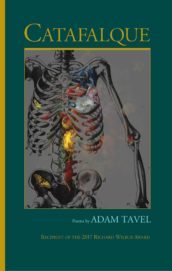 Adam Tavel
Adam Tavel

